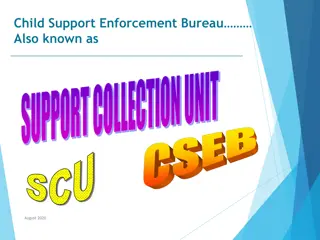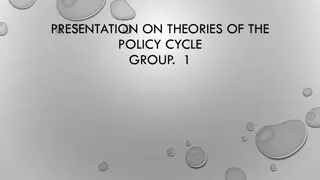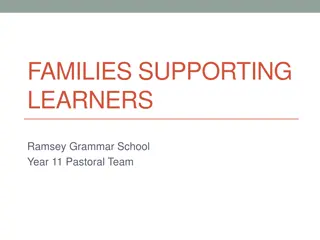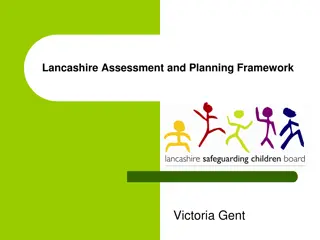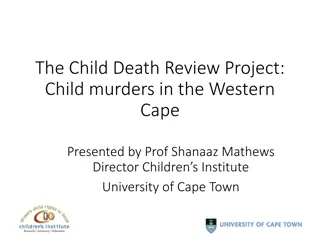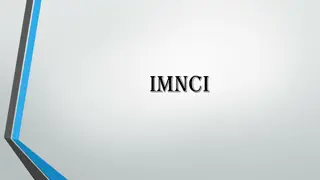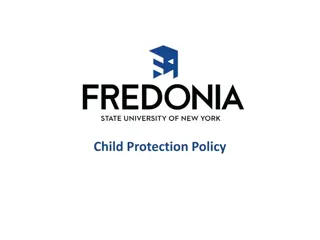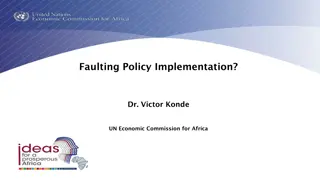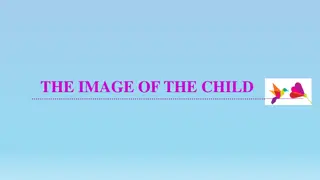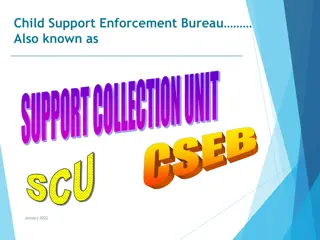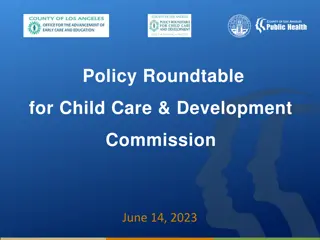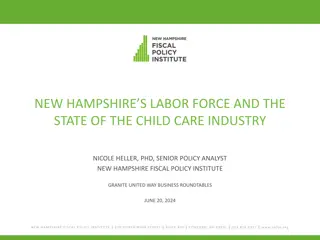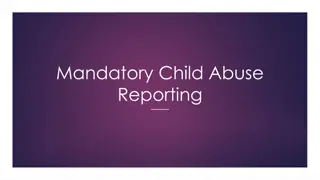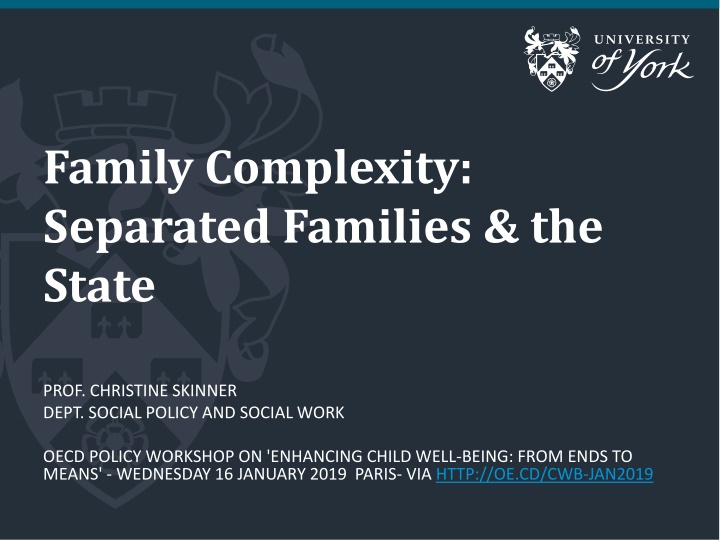
Challenges in Child Support Policy Analysis
Examining the complexities of child support systems for separated families and the state's role in poverty reduction outcomes. Evaluating the effectiveness of UK's child support scheme and exploring the dynamics of shared care in influencing support amounts across different countries.
Uploaded on | 1 Views
Download Presentation

Please find below an Image/Link to download the presentation.
The content on the website is provided AS IS for your information and personal use only. It may not be sold, licensed, or shared on other websites without obtaining consent from the author. If you encounter any issues during the download, it is possible that the publisher has removed the file from their server.
You are allowed to download the files provided on this website for personal or commercial use, subject to the condition that they are used lawfully. All files are the property of their respective owners.
The content on the website is provided AS IS for your information and personal use only. It may not be sold, licensed, or shared on other websites without obtaining consent from the author.
E N D
Presentation Transcript
Family Complexity: Separated Families & the State PROF. CHRISTINE SKINNER DEPT. SOCIAL POLICY AND SOCIAL WORK OECD POLICY WORKSHOP ON 'ENHANCING CHILD WELL-BEING: FROM ENDS TO MEANS' - WEDNESDAY 16 JANUARY 2019 PARIS- VIA HTTP://OE.CD/CWB-JAN2019
Separated families & the state 1. Who is child support for the state or children? What are the poverty reduction outcomes produced by child support when take account of policy principles and programme interactions? Is the UK child support scheme a good policy model? 2. What is state role in supporting shared care? Highly contested policy area conceptually ambiguous term Good policy models unknown? What counts as good? How does shared care affect child support amounts (13 countries)? Definition: Child support money paid by one separated parent (usually the father) for the financially supporting children post-separation
Complex Separated Families STEPFAMILY LIVE IN HOUSEHOLD (Mother & Step-Dad) MOTHER S PREVIOUS FAMILY OUTSIDE HOUSEHOLD STEP DAD S PREVIOUS FAMILY OUTSIDE HOUSEHOLD The mother and children from his 1st family live together. Mothers children from previous relationship. The non-resident father (father of her children from her 1st family) Step family s new child. Father s 1st children visit weekends. ....... Mix of: full siblings half siblings step-siblings Shared Care Child Support out Child Support in Shared Care THE STATE SETS EXPECTATIONS for RESOURCE SHARING ACROSS HOUSEHOLDS
1. Who is Child Support for? OECD (2011) IF resident parent on Income Support, at least some child support should be passed through for child. Thus, child support payments should be complementary to benefits, not act as a full substitute for benefits. Helps reduce child poverty. Child support treated as substitute to benefits no or part pass through New Zealand 1 USA (Wisconsin) 1 Child support treated as complement to benefits full pass through UK 1 Australia 1 BUT interactions between programmes means child support income may be used to calculate state benefits thereby substituting benefits. Child support treated as full/part substitute to benefits interactions New Zealand 1, USA (Wisconsin) 1. Australia 1, 2. Finland 2, Germany 2,
1. Who is Child Support for? UK has exceptional good? child support policy. Child support full complement to benefits (full pass through and not counted in benefit calculations): Helps improve child poverty outcomes if paid by the parent! Effective enforcement therefore very important. BUT then there are fees that is another story. UK policy principles right child support is for children. But .overall poverty reduction outcomes also depend on generosity of income support benefits within countries.
2. State role re shared care Shared care highly contested and complex policy area. Assumption it is increasing but unknown what it is? Prevalence rates hard to measure: estimates 3%-40%. Equal care = 1%. No good international evidence to guide policy. Parents need resources make shared care a reality but social protection policies assume one family in one household . How is Child Support policy doing? Tension: accounting for shared care good re gender equality BUT reduces child support and disadvantages the main parent. Child support potentially has a social protection function (e.g. UK) and this is compromised. New comparative evidence 13 countries (3).
2. State role re shared care Amount of child support (in pppUS$ / month) calculated from formal child support guidelines in each country for a model separated family: parents have two overnights stays (blue) versus joint physical custody (red). 600 500 400 300 Two overnignts Shared care 200 100 0 Australia Denmark New Zealand Norway UK Belgium Estonia France Spain Sweden Finland Iceland USA Model separated family = 2 children aged 7 and 10, Dad earns male median full time earnings in his country and Mum male median full time earnings). Source: (3) Preliminary analysis Hakovirta and Skinner (forthcoming).
References 1. Skinner, C., Meyer, D. R., Cook, K. & Fletcher, M., 1 (2017) Child Maintenance and Social Security Interactions: The Poverty Reduction Effects in Model Lone Parent Families Across four Countries, JRNL Social Policy. 46, 3, 495-516. 2. Hakovirta, M., Skinner, C., Hilamo, M., Jokela, M. (in press) Child poverty, child maintenance and interactions with social assistance benefits among lone parent families: a comparative analysis JRNL Social Policy 2019. 3. Hakovirta, M. and Skinner, C. (forthcoming) A comparative analysis of joint physical custody and child maintenance arrangements in Laura Bernardi & Dimitri Mortelmans (eds.) Interdisciplinary insights on shared physical custody, Springer.


